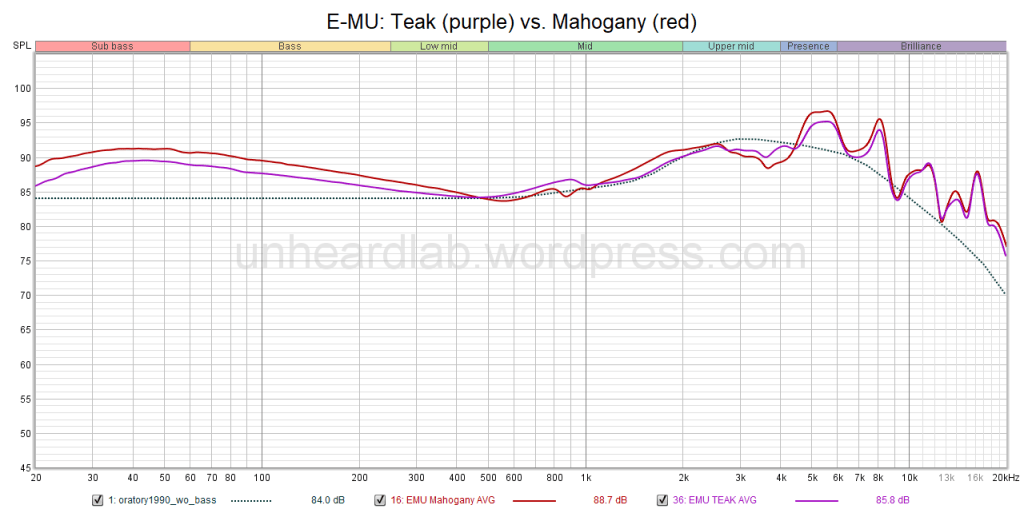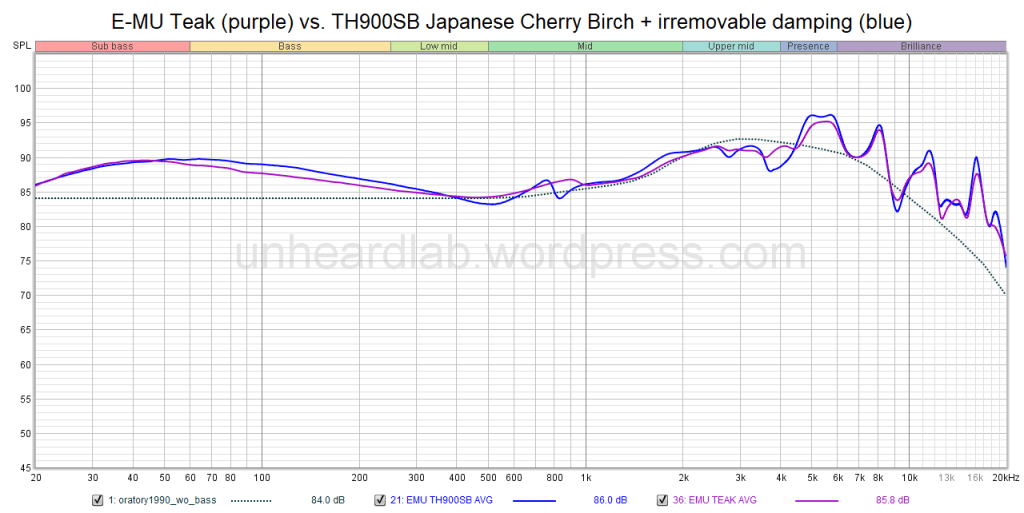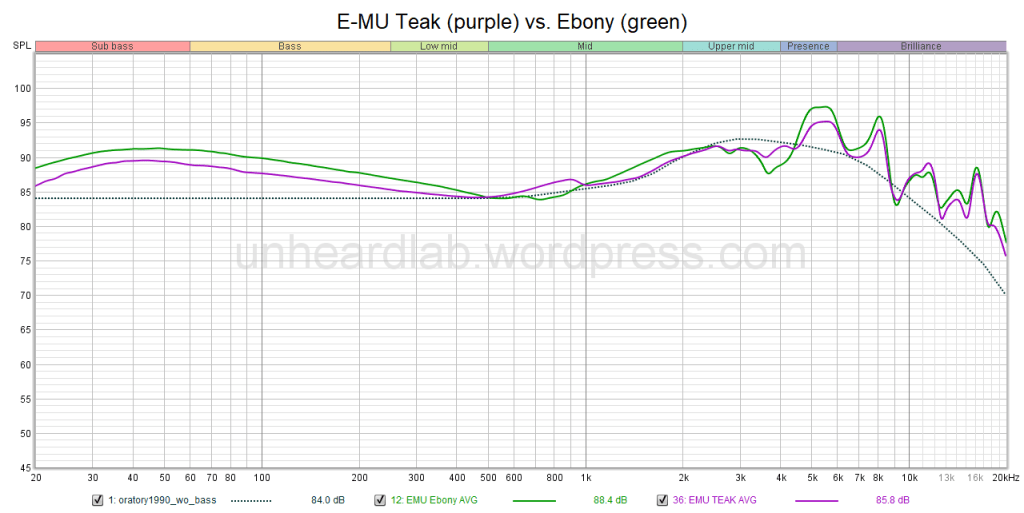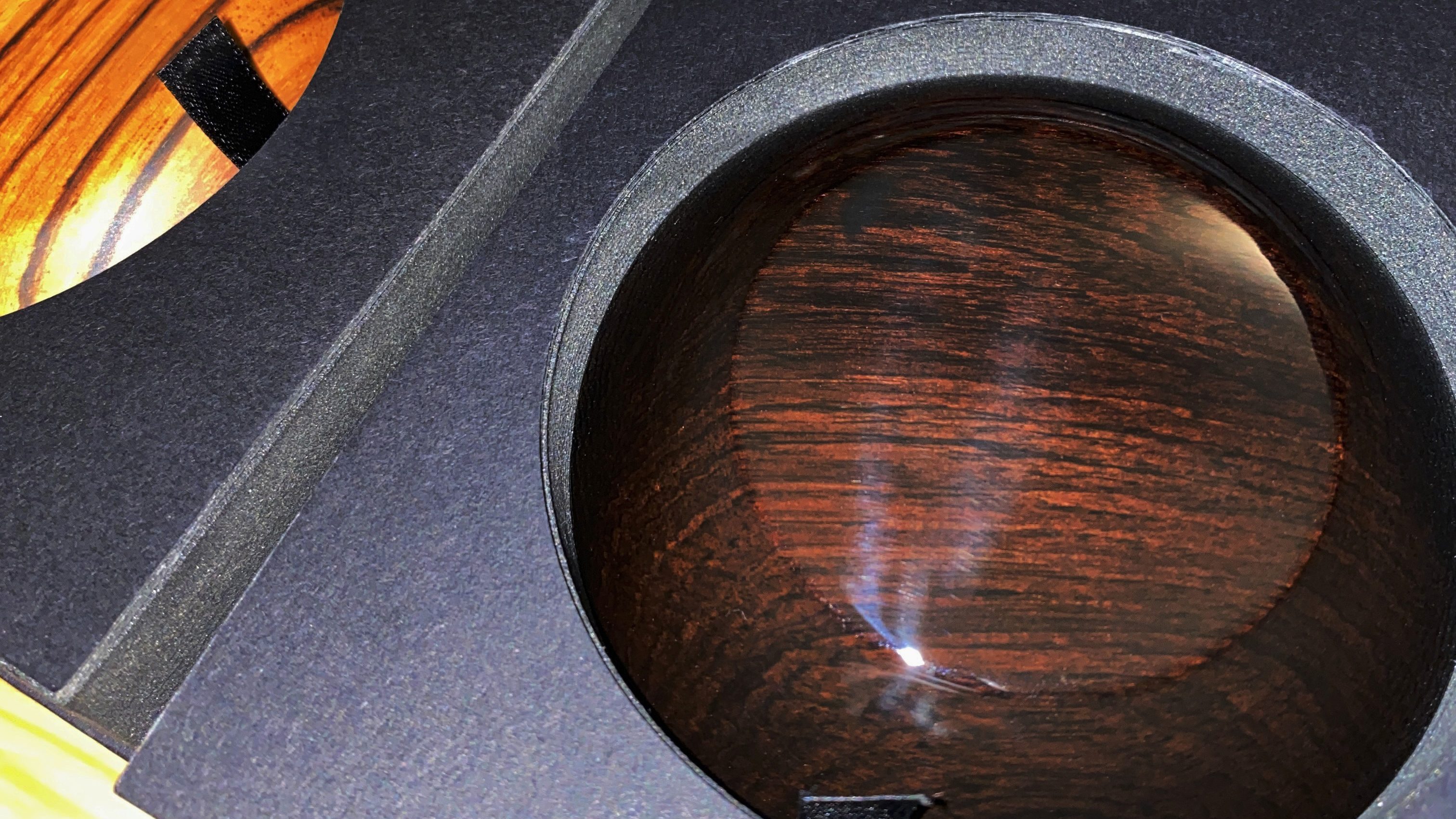
This is a project I’ve been interested in undertaking for a long time. Earlier, I measured the E-MU Teak and Fostex TH900 MK2 headphones, both based on the same Foster OEM model. The wooden back enclosure also happen to be interchangeable. So I thought, why not swapping them out and see how it changes the sound? To up the game I’ve purchased two extra sets from E-MU:

Factors that may affect sound
How much of a difference would swapping wooden cups make? Different woods tend to sound different, as acoustic instrument players probably know. Eric Clapton’s 1939 Martin 000-42 acoustic guitar, for example, is made with Adirondack spruce top and Brazilian rosewood back and sides. Acoustic properties are often determined by factors like
- density
- hardness
- resonance frequencies
- age
- moisture content
Hardness perhaps plays the most part in determining sound. One widely adopted metric is the Janka Hardness Scale, according to which the wood types under test are ranked from the hardest to softest as below:
- ebony (3700 lbf)
- zebra (1830 lbf)
- cherry birch (1470 lbf, using the data of sweet birch)
- teak (1155 lbf)
- mahogany (900 lbf)
Weight of each cup is measured with food weight scale:
- ebony: 79g
- zebra: 30g
- cherry birch: 44g
- teak: 20g
- mahogany: 44g
A reason why the teak cup is so slight is because it is the shallowest and smallest in size. The rest are of the same size.
Methodology:
To make sure that the minute differences between each type of wood is captured in frequency response, factors like headphone positioning on the measurement rig must be under tight control. In the tests below the factors under control are
- all tests done using the E-MU Teak headphones with stock cable and the Fostex TH610 pads
- the TH610 pads are chosen due to their larger front opening which allows for consistent mounting on the rig, comparing to the stock EMU pads which have a much smaller oepning thus much more sensitive to variations in positioning
- pad positioning is also kept constant by aligning the stiches to a marked spot on the headphone housing
- consistent headphone positioning
- a circle is drawn on the cheekplate to ensure that the sitting position is mostly unchanged
- digital and analog output and input volume
- computing an average of three frequency response measurements for reliability
All in all this should give us a fairly reliable and representative results of the differences caused by swapping the cups!

Some clear differences can be seen. However, when one rigorously control for factors that may cause ‘false positives’ when measuring frequency response, the actual differences in timbre appear to be smaller than many claim. The biggest difference seems to be in the bass area: almost all wood types have more low ends than teak. At a difference of about 5db at 20hz shoul be clearly audible. Also, the 600-1000hz region also shows variations mostly likely caused by the coupling difference between wood cups and the headphone chamber. Teak wood looks to be overall the most linear ie. smooth but with the least amount of bass.
Mahogany:

Let’s start with mahogany, the softest wood. Bass region as a whole is lifted by about 2-3db. Tonality is defintely warmer, although there’s also a slight boost of about 1-2db around 5-7khz. In the mids there’s some give and take so overall the mahogany cups make these noticeably warmer and V-shaped than Teak.
Japanese Cherry Birch (from TH900MK2 Sapphire Blue):


These are perhaps the closest to Teak in terms of FR. Still you get a bit of bass boost but mostly in the midbass area only. Mids and highs are close enough.
Of note the TH900 cups come with damping material inside the cups.
Zebrawood:


FR of the zebrawood is pretty similar to that of the mahogany, except the mids between 600-1khz is more filled in. Even the time domain responses are very similar.
Ebony:

Finally, we have the ebony cups. These are the hardest and denest wood. Then do they have any mystical acoustic properties? They have the most amount of bass, and a more scooped mids between 600-1kh. Vocals sound less boxy as a result. The peak at 5-6kz and 8khz are also the strongest on these, making them the most V-shaped out of all tested.
In terms of time domain, transience with the ebony cups is quite fastest, about on par with the TH900 cup which comes with damping foam inside (the ebony cups do not). Decay with the ebony cups is the fastest, while all the other woods add extra reverb to the sound, albeit very subtlely.
P.S. the wood grain texture of the ebony cup is almost impossible to capture under natural light, so I turned on camera flash:


